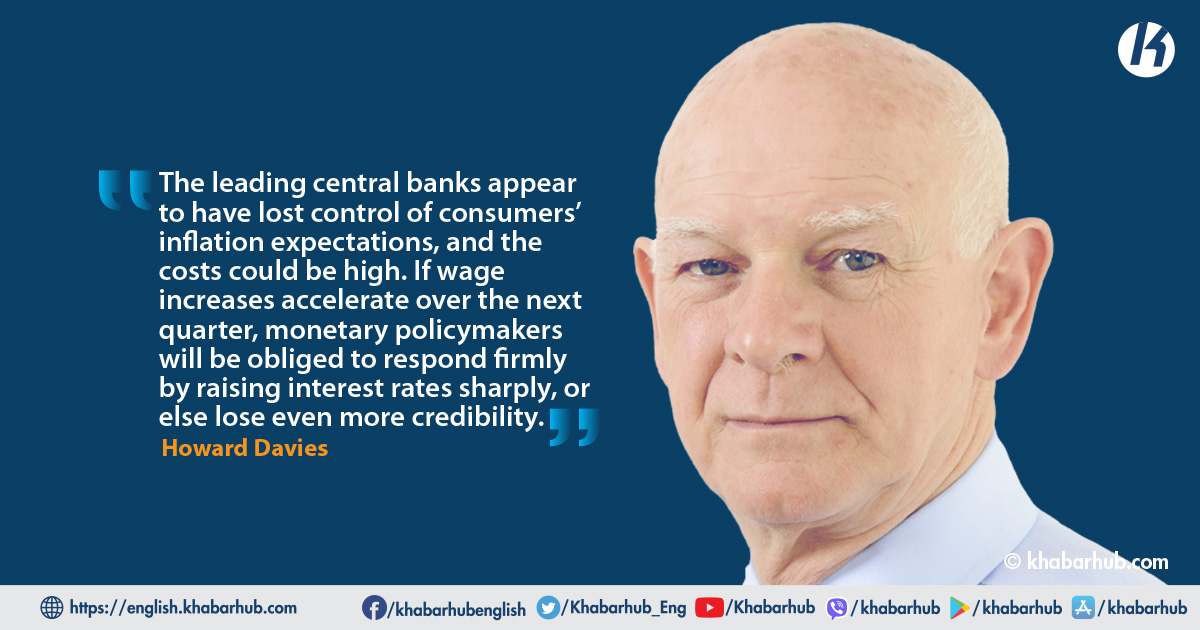Central bankers are not required to be great wordsmiths. The ability to craft elegant paragraphs is not normally in their job description.
Until recently, many leading monetary policymakers operated on the “least said, soonest mended” principle. Montagu Norman, the governor of the Bank of England from 1920 to 1944, lived by the motto “never explain, never apologize.”
Similarly, former US Federal Reserve Chair Alan Greenspan once proudly observed that he had “learned to mumble with great incoherence.”
But those views are now passé. Senior BOE officials made, on average, a total of just 13 speeches a year in the 1990s. In the last decade, the average was over 80, and the trend line points upward. A similar pattern can be observed at other central banks.
That is not because central bankers now yearn to be public figures; privately, many would prefer the Norman approach. But an inflation-targeting regime is thought to work through clear and credible management of expectations.
Persuade economic actors that you will hit your target most of the time, and they will do part of your job for you by moderating their wage demands and maintaining stable prices.
Economists on average predict an inflation rate over the next year of 3.7%. Business managers expect it to be a little higher, at 4.1%, while households expect prices to rise by 4.7%.
So, central-bank communication matters; for monetary policymakers, it is not an optional feature. And their experience in past months has been unfortunate. As recently as September, Fed Chair Jerome Powell was telling the world that the rise in inflation, which began to be felt last summer, was “transitory.”
The word was picked up by European Central Bank President Christine Lagarde, and in November was still widely used across the Western world.
But by December, with US inflation running at 7%, the messaging had changed, and “transitory” was out of fashion. Powell was now telling us that it was “probably a good time to retire that word,” while US Treasury Secretary Janet Yellen, his predecessor at the Fed, acknowledged that it “hasn’t been an apt description.”
Rarely has a financial term had such a short life. “Transitory” now lies buried in central banks’ lexicographical graveyard, along with “forward guidance.” Sic transit, as the Romans would say.
Does this embarrassingly abrupt linguistic U-turn matter? I fear it does.
Speeches are only one part of the communications mix central banks use to influence inflation expectations. Monetary authorities have also enthusiastically taken to social media, and especially to Twitter, where the Fed currently has over 800,000 followers, and the ECB over 650,000, for feeds that regularly extol the virtues of low inflation.
But there is worrying new evidence that this message is not getting through, and that central banks are not trusted as much as they would like to think.
In fact, fewer than 20% of US households are aware that the Fed is targeting a 2% inflation rate. Remarkably, almost 40% think that it is aiming for inflation of 10% or more.
The evolution of wage settlements over the next quarter will be crucial. If wage increases accelerate, central banks will be obliged to respond firmly or lose even more credibility, so interest rates will be rising as economies are still struggling to emerge from the pandemic.
Many also believe that inflation has recently been higher than official statistics indicate. Here, some of them might be right, as different social strata face different inflation rates. For example, rising food and energy prices disproportionately affect poorer households.
Central banks like to focus on so-called core inflation, which excludes short-term factors – specifically, increases in food and energy prices – that monetary authorities cannot control.
That can lead policymakers to see a rise in inflation as “transitory.” But consumers’ price expectations, by contrast, are formed by the inflation rate they have actually experienced, and food and energy costs are a significant component of many households’ budgets.
That is probably why American consumers and households think inflation in the coming year will be higher than American economists do.
Economists on average predict an inflation rate over the next year of 3.7%. Business managers expect it to be a little higher, at 4.1%, while households expect prices to rise by 4.7%.
Households’ medium-term expectations are higher, too. That pessimism will certainly influence wage demands, as is already evident.
Who will turn out to be right? We will soon know. Central banks can point to some persuasive arguments suggesting that inflation will fall through next year. For example, despite higher cooling demand, energy costs typically fall in the Northern-hemisphere summer.
But the outlook for energy costs is highly uncertain, and is influenced by unpredictable geopolitical risks, not solely by supply and demand, which can more easily be modeled.
The most useful indicator in that regard might be the number of Russian troops massed on the Ukrainian border, which is not a statistic central banks normally collect.
For now, central banks’ position is not desperate; hyperinflation is not around the corner. The Fed can argue that the price level has merely returned to where it would have been had policymakers precisely met a 2% annual inflation target in each year since 2000. In the eurozone, prices are still 10% below that level.
But the costs of losing control of consumers’ inflation expectations, which the leading central banks appear to have done, could be high.
The evolution of wage settlements over the next quarter will be crucial. If wage increases accelerate, central banks will be obliged to respond firmly or lose even more credibility, so interest rates will be rising as economies are still struggling to emerge from the pandemic.
It is fortunate that Powell has recently been reappointed, as he may not win any popularity contests in 2022.
(Howard Davies, the first chairman of the United Kingdom’s Financial Services Authority (1997-2003), is Chairman of NatWest Group)
Copyright: Project Syndicate








Comment